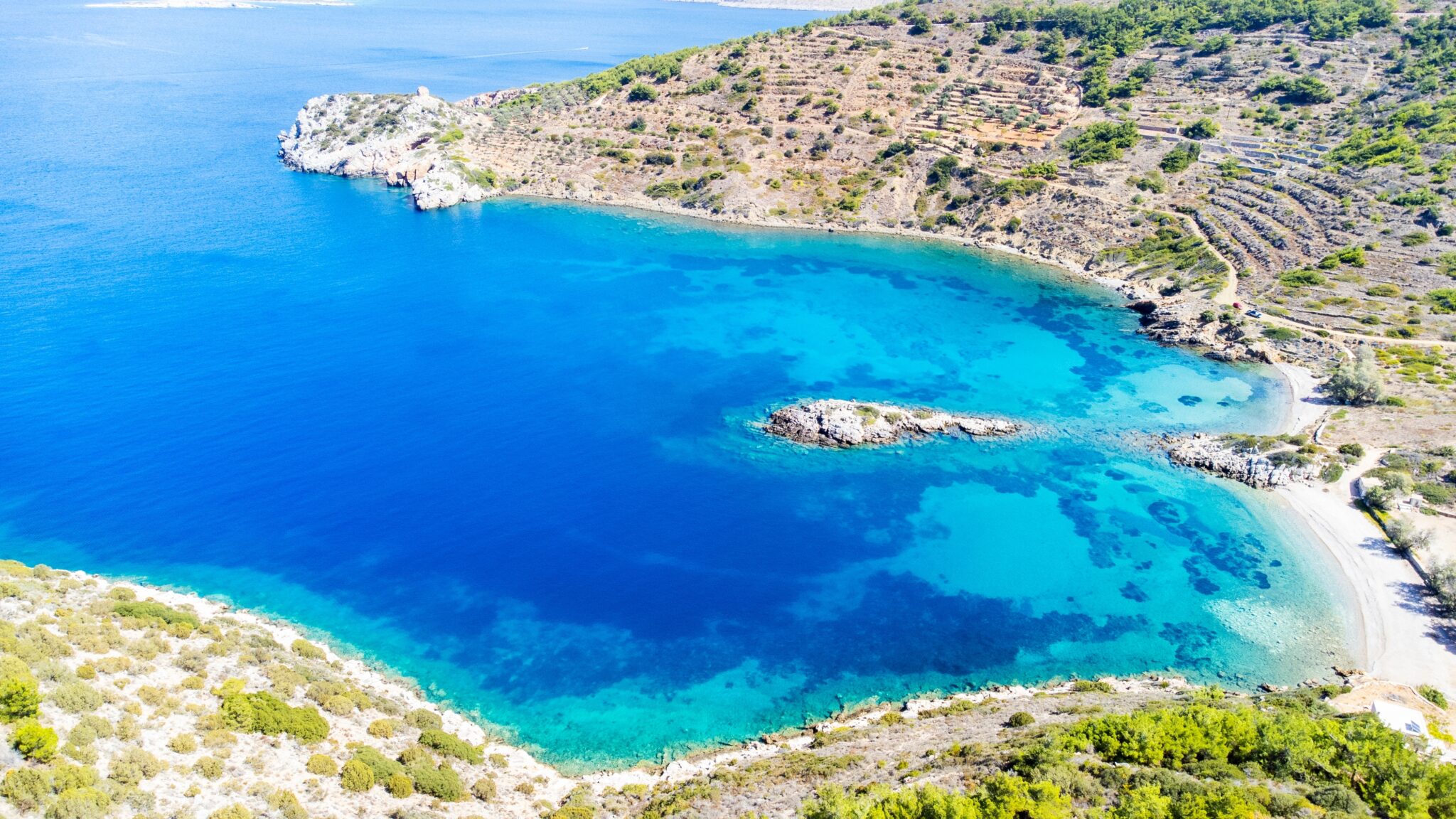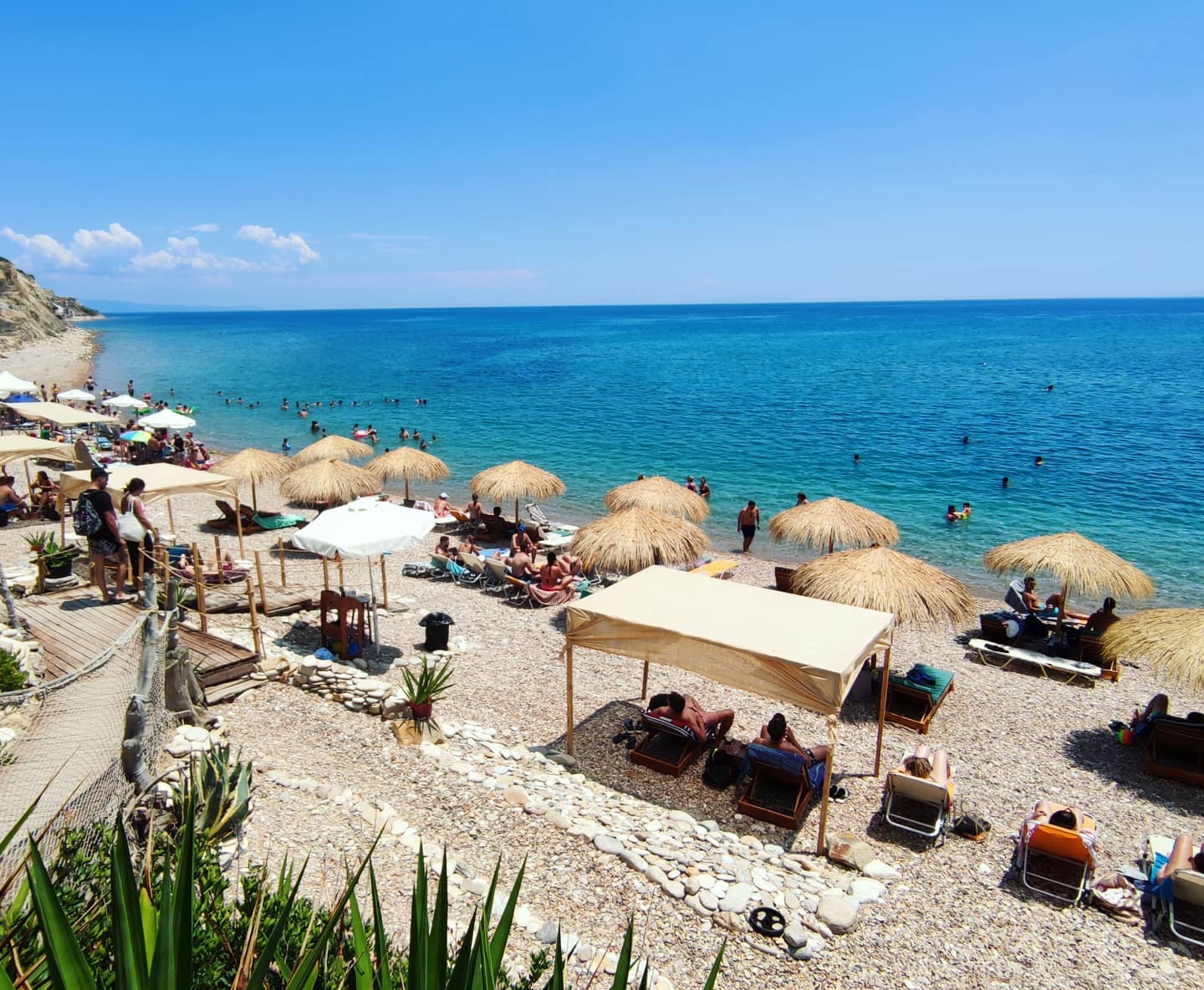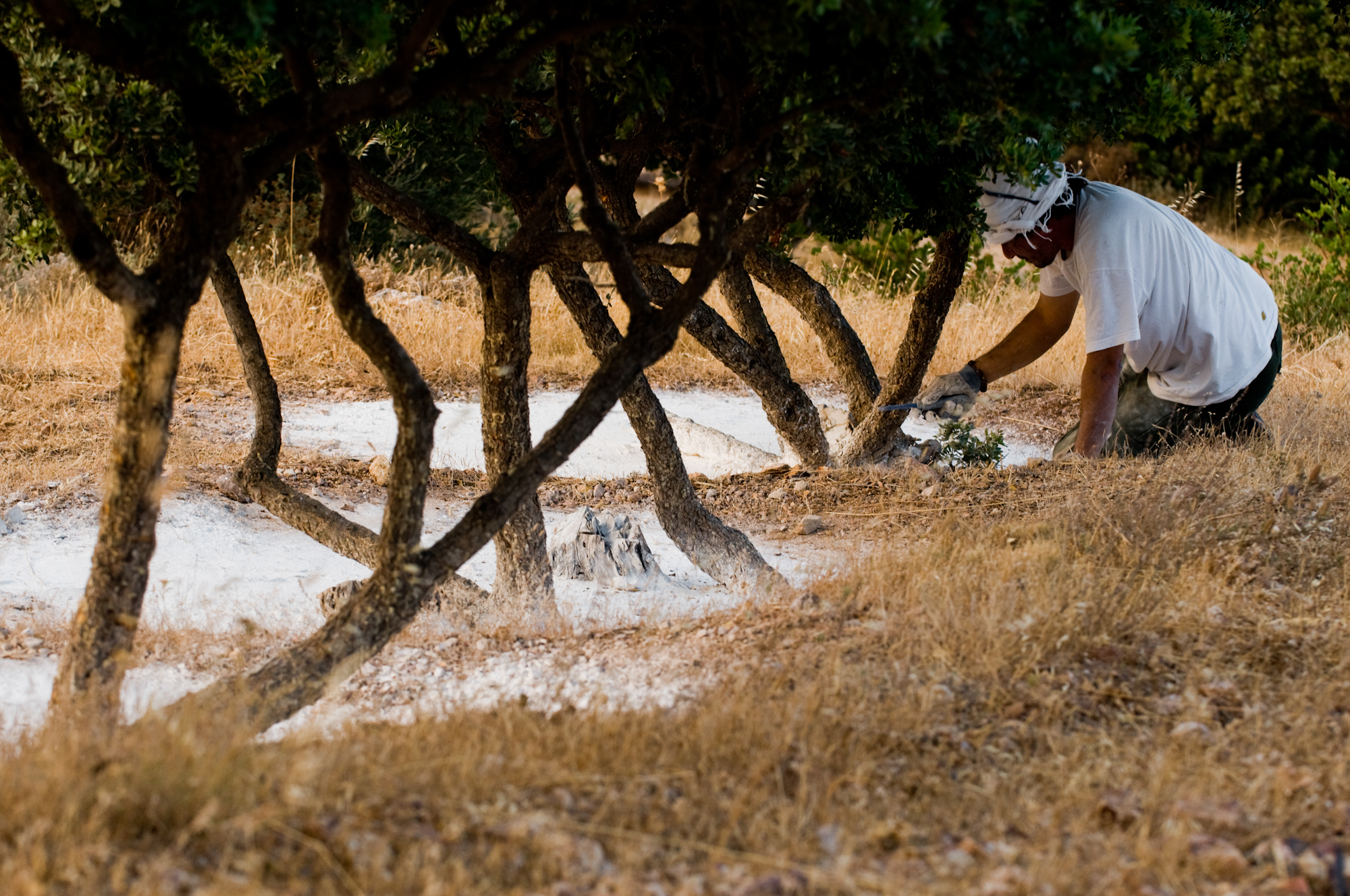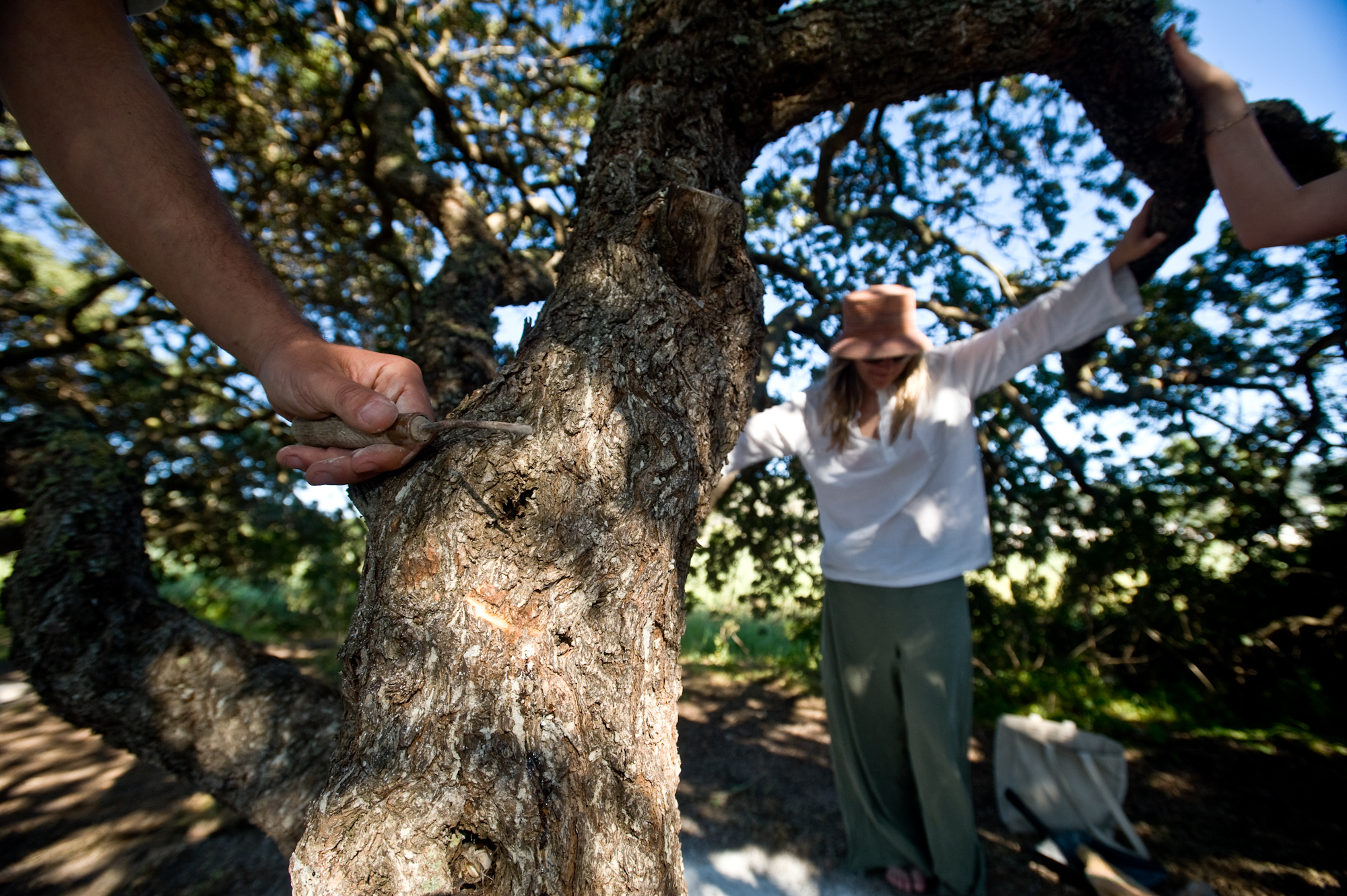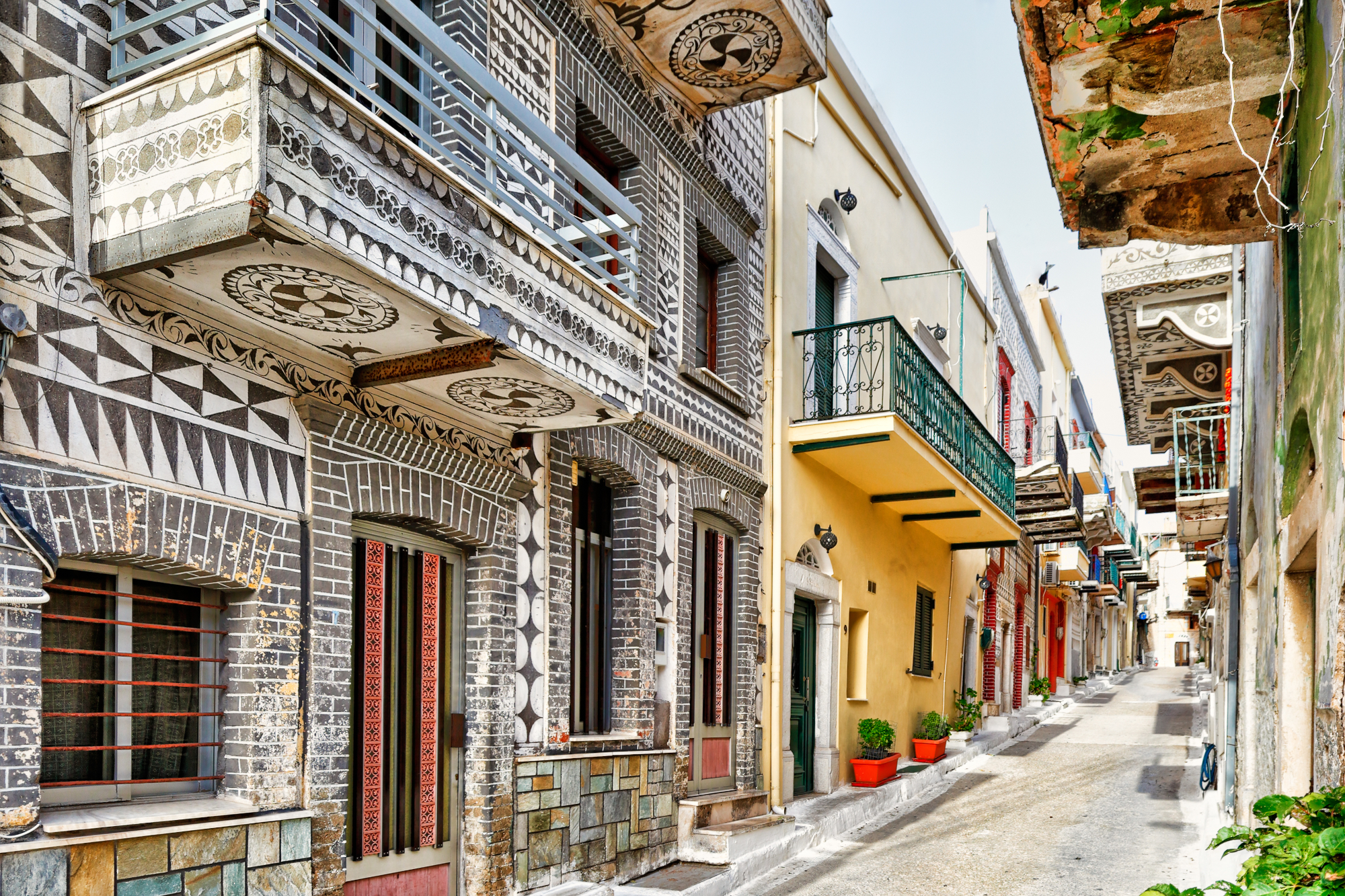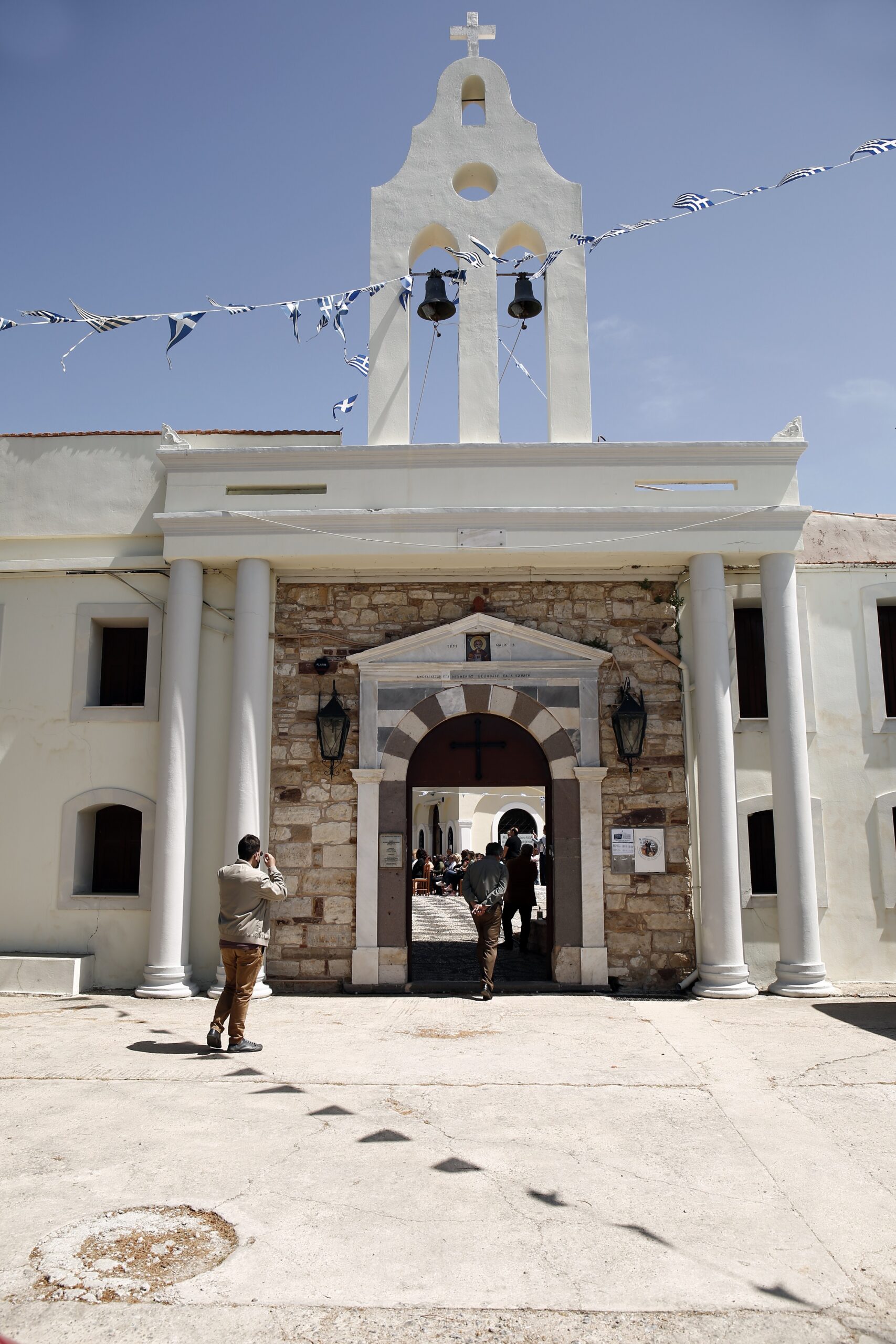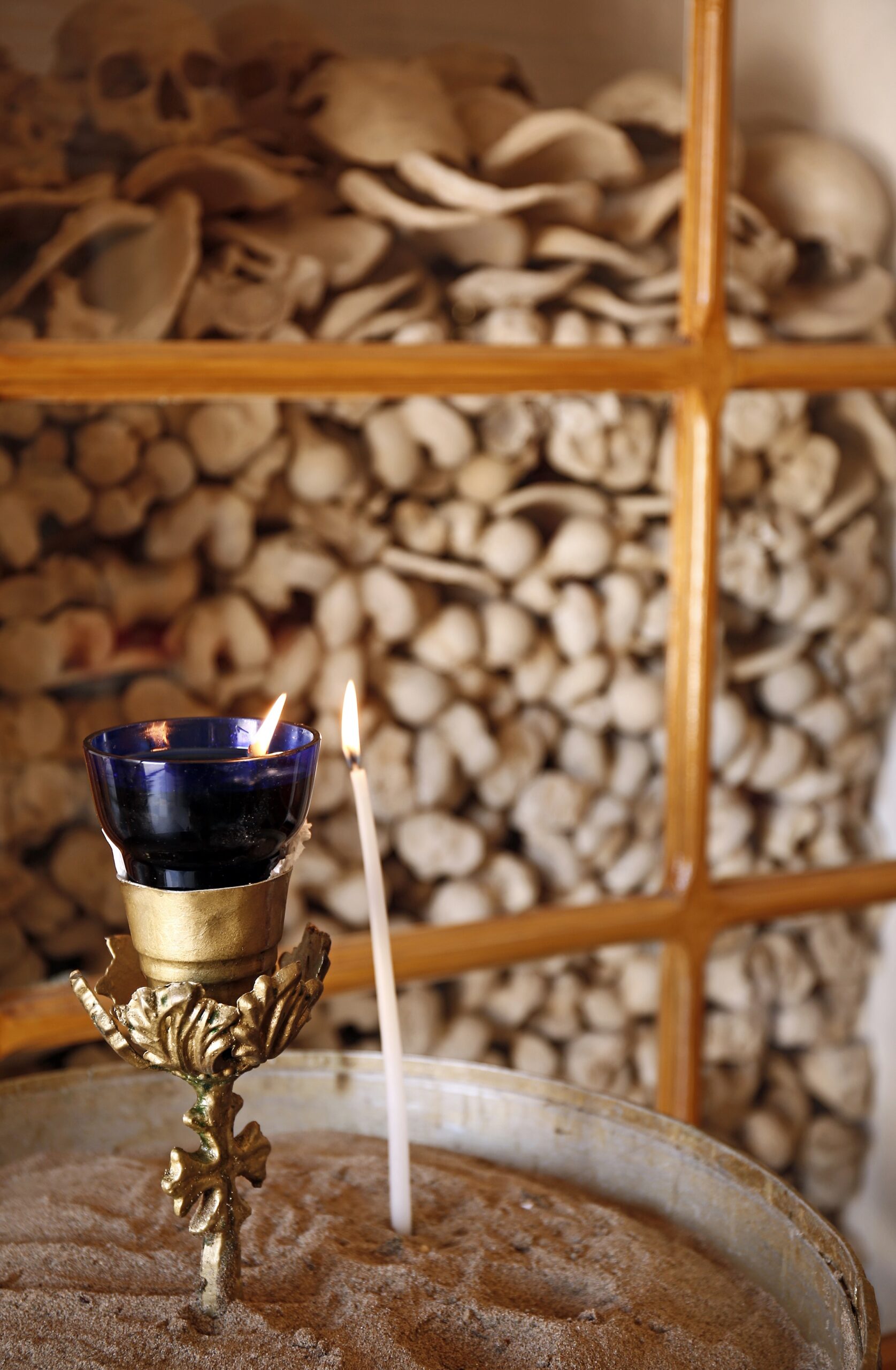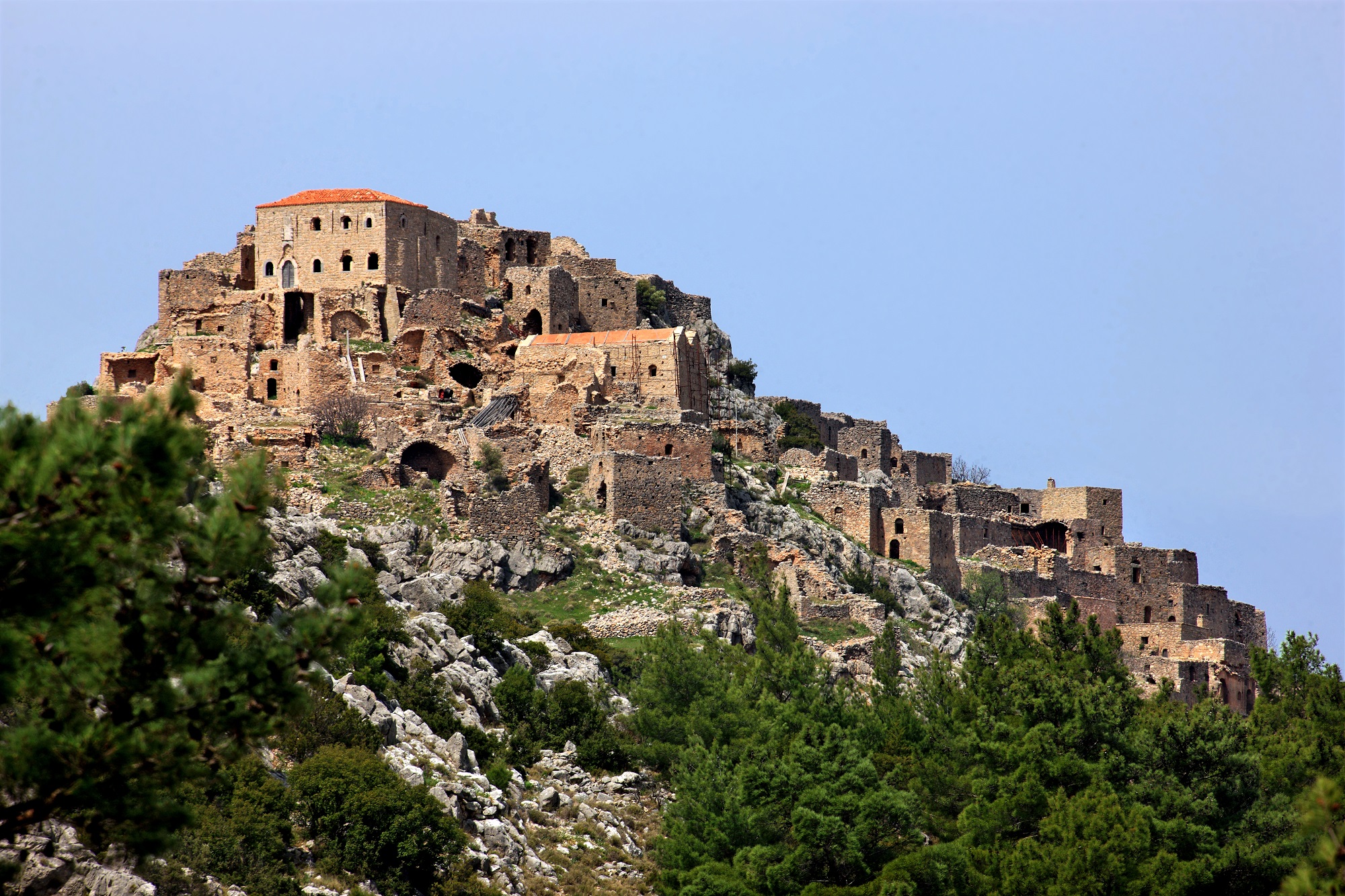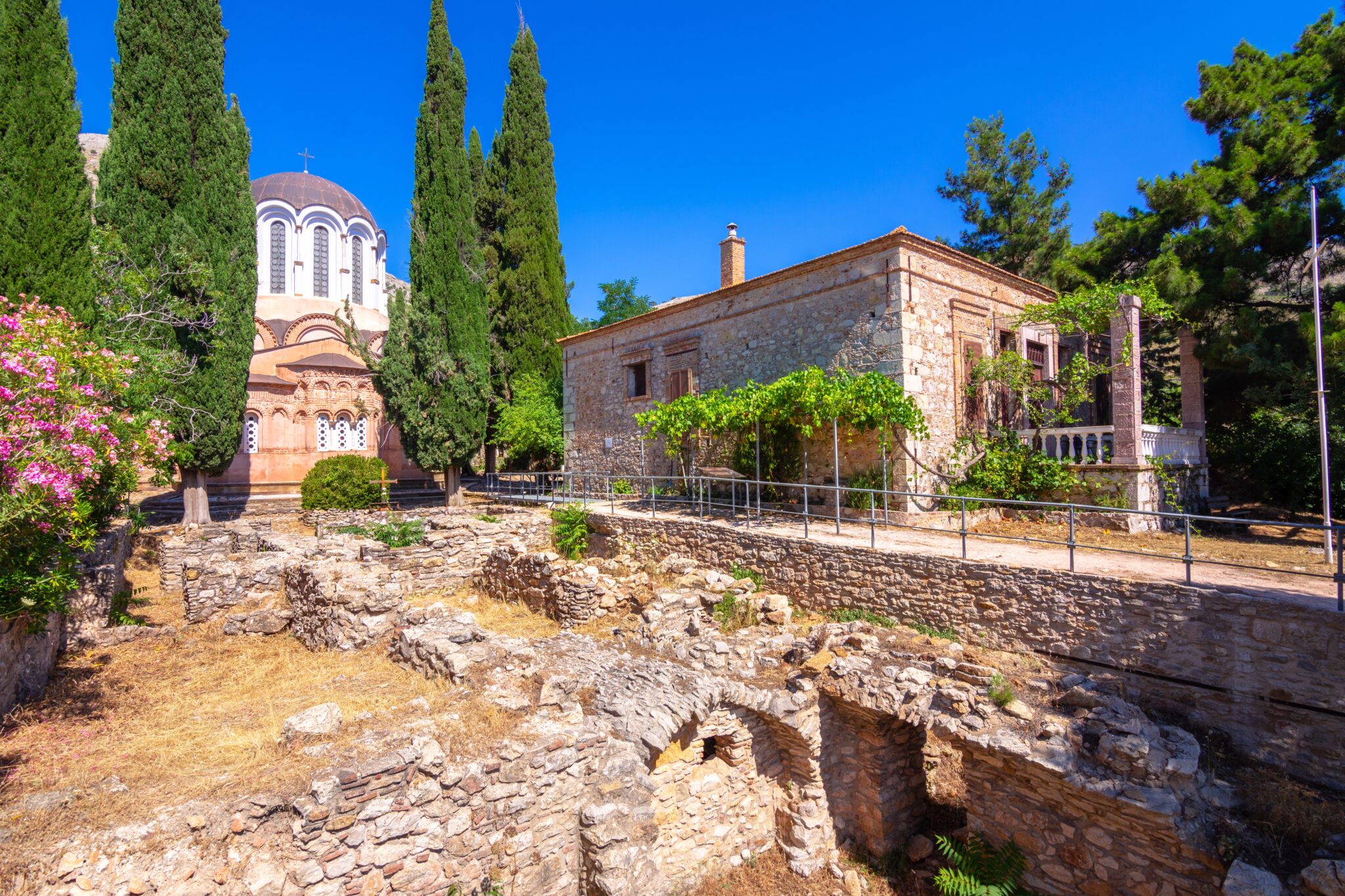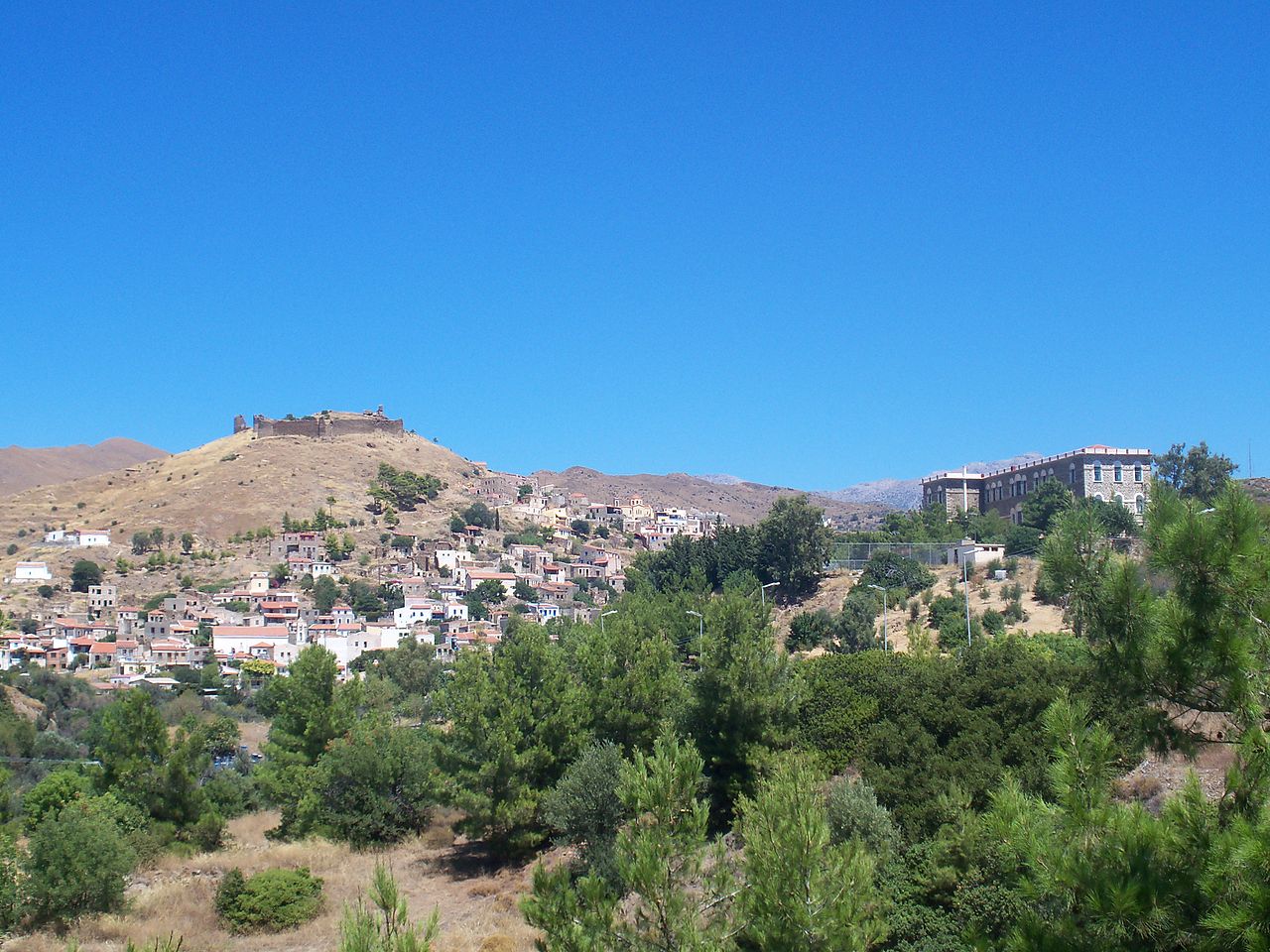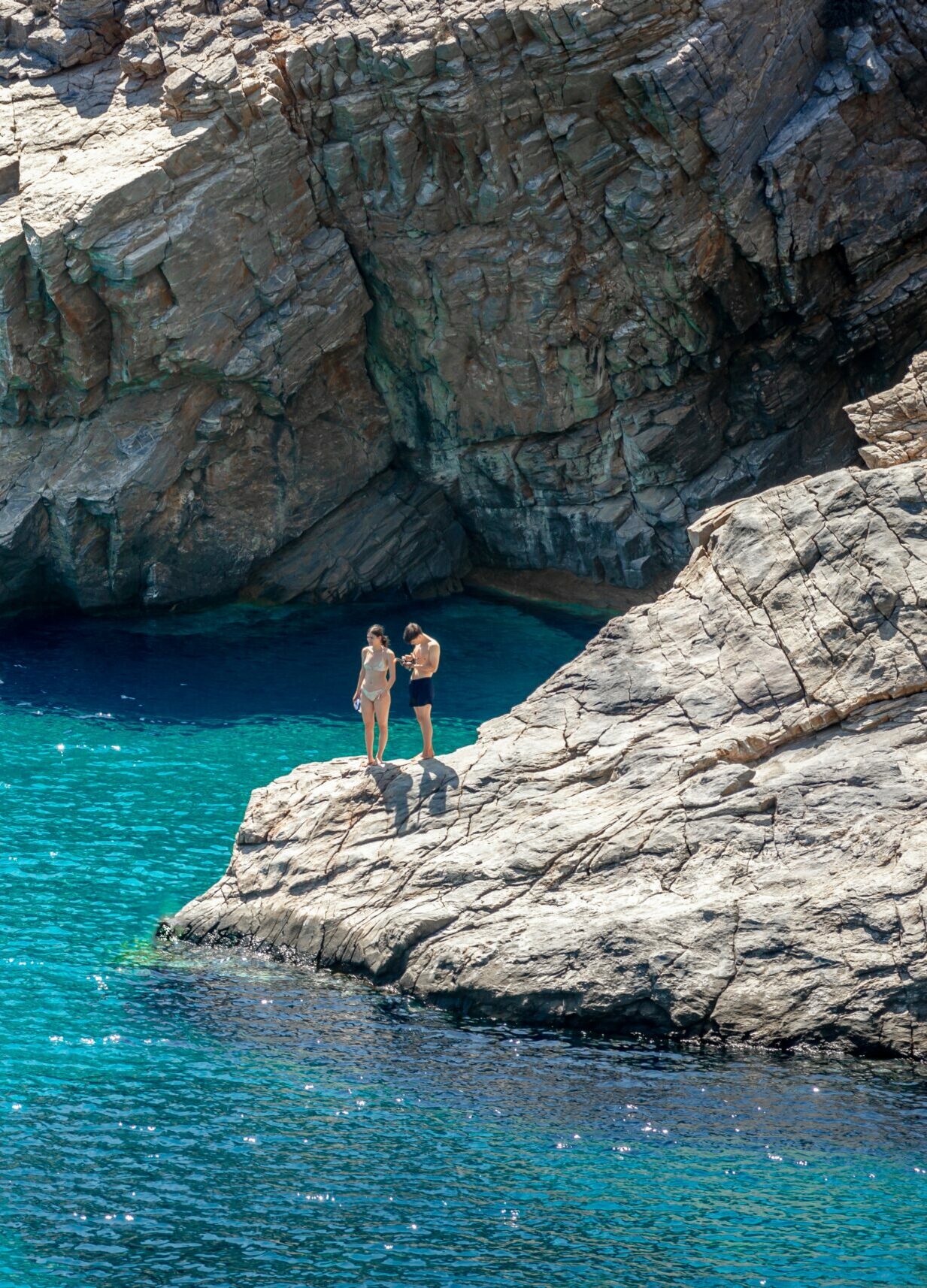To do Chios justice you need to take time away from the capital, for the island has a merited reputation for having some of the greenest and most attractive landscapes in the Aegean. Most of Chios is mountainous with the north being forested, despite severe fires in the past twenty years, while the mastic crop covers much of the south.
The mastic bush, Pistacia Lentiscus, is found across much of the Mediterranean but only in southern Chios does it produce the aromatic resin so intrinsically linked with island life for centuries. The trees are pruned to an umbrella shape for easier harvesting and incisions are made on the trunk which secrete the precious mastic. Used in paints, cosmetics, construction and as chewing gum, the wealth generated supported many villages and it was crucial in the brutal massacre of the island in 1822 as the supplies to the harems of Constantinople dried up. Still harvested today it is marketed as gum under the Elma brand or drunk as Mastiha, a sweet liquer.
Mastic Villages
Beginning in the 14th century, the Genoese founded a series of fortified villages in southern Chios to prptect the families who cultivated mastic. These mastic villages, Mastihohoria, built out of sight from the sea, shared a defensive design with double thick walls, a labyrinth of narrow streets and blind alleys to confuse the enemy, and a square tower, pyrgos, in the centre as a last refuge to hold the residents against pirate attack.
Today, only 22 Mastic villages have stood the test of time, as many were destroyed in the catastrophic earthquake that devastated the island in 1881. Mesta is the best preserved, a maze of twisting and vaulted streets linking two-storey stone and mortar houses that are buttressed to protect against earthquakes. The enchanting village sits inside a series of metre thick walls with the outer row of houses doubling as protection. On the ruins of the central tower, the Church of the Great Archangel, Megalos Taxiarchis, was built in the 18th century. One of the wealthiest churches due its extensive landholdings, the bell tower dominates the skyline in the central square and its architecture is a mix of the Baroque and the late folk art style of Chios.
Pyrgi is the largest of the mastic villages and aesthetically the most interesting with many of the buildings on the narrow arched streets are adorned with Ksista, a black and white decoration only found here. Coated with cement and volcanic black sand from the nearby beaches, the outer walls were whitewashed and stencilled with geometric patterns. In Avgonima the view is majestic over the sea to neighbouring island of Psara, while Olimpi is seemingly unchanged since mediaeval times. Kalamoti’s whirling lanes and stone houses proudly stand intact but Kallimassia was almost destroyed by the earthquake and only the ruins of towers and churches remain.
Chios Mastic Museum
The mastic tree has dominated the economic, cultura, political and social life of Chios for centuries and its role is explained in a stunning stone and glass pavilion built on a bluff overlooking a mastic grove. Informative exhibits explain the collection and production process and how the local growers were often exploited by greater powers and artefacts and photographs tell the often tumultuous history of the island.
Chios Mastic Museum (Tel.:22710 72212, www.piop.gr, closed Tuesday, €4)
Agios Minas
Built between 1572 and 1595, the monastery stands on a hill outside the village of Neohori. The events of April 2nd 1822 helped to put the name of the monastery on the map and indeed further the Greek cause for Independence throughout the world. After looting and massacring the city of Chios, an Ottoman force drove the local population to take shelter in Agios Minas. Locked inside the catholicos of the monastery, 3000 unarmed men, women and children were burned to death. Today the atrocity is still evident in the blood stained floor of the church and the gruesome mausoleum with the skulls and bones of the fallen. A copy of Delacroix’s painting of ‘The Massacre of Chios’ is on display alongside a poem by Victor Hugo, and as the news of the massacre shocked Europe, organisations collected money to support the Greek revolution and many westerners came to Greece to fight against the Ottomans.
Anavatos
An abandoned fortified mediaeval village in a spectacular setting, Anavatos is a stunning reminder of Chios’ macabre history. High on a mountain and surrounded by steep cliffs, in 1822 as the Turks rampaged over the island killing all in their wake, local Greeks hid in the castle. However, the Ottomans advanced on the fortress, killing the menfolk in hand-to-hand combat on the narrow village streets. The women and children, rather than be enslaved, threw themselves off the ramparts to die on the rocks below.
Uninhabited except for one old lady and with a seasonal café, the village was destroyed in the earthquake of 1881 and is today an unforgiving and unforgettable ghostly ruin. The views from the top are sensational but sadly tinged by the terrible scenes that were played out here.
Daskalopetra Homerus
Near to Vrontados is a rock where it is believed that the blind and frail poet Homer dictated the Iliad and the Odyssey to his students who wrote down the epic poems for him. Probably used as an altar in ancient times, the rock has been carved into the shape of a small shrine devoted to Cybele. The views are nice over the village and the beach below, also known as Daskalopetra, is pleasant place to spend the afternoon with smooth pebbles and cool clear waters.
Nea Moni
Hidden among olive groves, the most important monastery on the island, 11th century Nea Moni is known for its fine examples of mosaic art. Byzantine emperor Constantine IX Monomachos commissioned the monastery after an icon to the Virgin Mary was found by monks, and the octagonal catholicon is the only surviving example of its kind. Alight with colour, the mosaics illustrate events in the life of Christ in azure blue, ruby red, emerald green and great swathes of gold. In the grounds are a vaulted cistern, a chapel filled with bones from the massacre of Chios, and a clock that still keeps to Byzantine time.
Volissos
Mentioned in the works of Thucycides, Volissos is one of the oldest settlements in Chios. It is thought to be the birthplace of Homer although Izmir, Salamis, Athens, Colophon, Ithaca, Argos, and Rhodes also lay claim among others. Pretty with many restored stone houses that march up the hill to a Genoese fort where Byzantine nobles were once exiled, there are excellent sunset views from the top.
Agia Markella
The monastery of Agia Markella is located on the coast, 8 kilometres from Volissos on the northwestern side of the island. There is a sandy-stone beach in front with clean water and views across to Psara. The patron saint of Chios, Agia Markella has a festival day on July 22nd when pilgrims often walk the 45 kilometres from Chios Town. On this day, the water in the sea by the monastery is said to boil and to become fresh and free of salt.
Read also:
Mastic of Chios, the precious resin tears originating from Greece
Visiting Chios: Scenic windmills, the scent of mastic, villages perched on the rock



